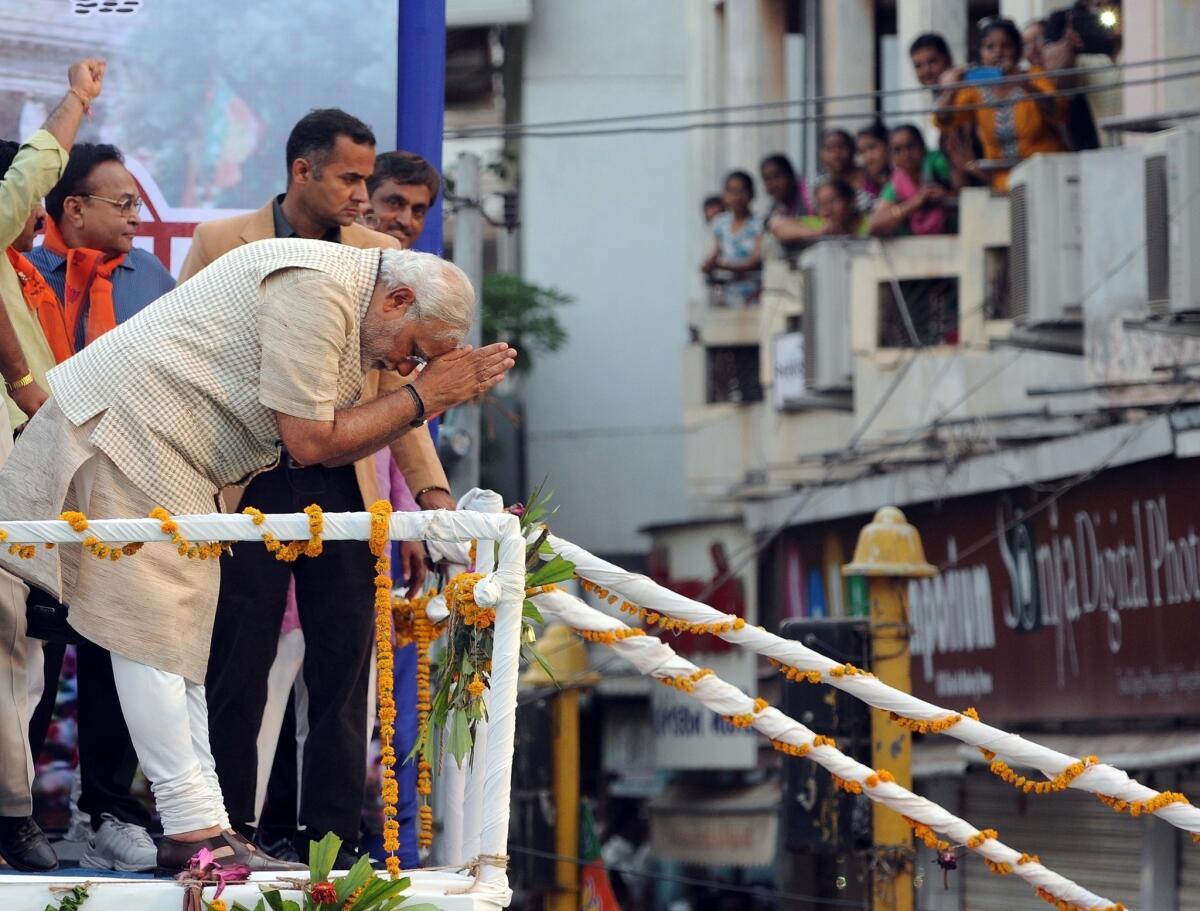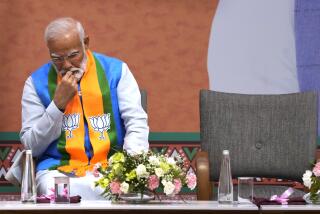From tea-seller to India’s top job: The rise of Narendra Modi

- Share via
Reporting from Mumbai, India — From selling tea to leading his party to a landslide national election victory, Narendra Modi achieved a remarkable rise in a country long led by political dynasties and social elites.
Narendra Damodardas Modi was born Sept. 17, 1950, to a poor family in Vadnagar, in what is now the western state of Gujarat. The third of six children, the young Modi helped his father sell tea at the Vadnagar railway station and, as a teenager, ran a tea stall with his brother near a bus terminal.
Teachers remember him as an average student but keen debater who had an interest in theater.
His family arranged his marriage to Jashodaben Chimanlal when he was 18. Modi acknowledged the marriage for the first time earlier this year, when he filed to run in the election. It was never consummated, according to his biographer, Nilanjan Mukhopadhyay.
Leaving behind his young wife, Modi joined the Rashtriya Swayamsevak Sangh, a right-wing Hindu nationalist group. He thrived in the RSS, a volunteer organization that prizes discipline and service to the nation, and he was eventually named to head its student wing.
In the late 1980s, he began working closely with the upstart Bharatiya Janata Party, the RSS’s ideological cousin, becoming its national secretary in 1998.
He became chief executive of Gujarat in October 2001. Just four months into his term, a train car carrying Hindu worshipers caught fire in mysterious circumstances, killing 59 people. Hindu leaders accused Muslims of setting the blaze, sparking communal riots that killed more than 1,000 people, most of them Muslims.
Modi’s government faced accusations of allowing -- even inciting -- the killing spree. But he denied complicity and was cleared of wrongdoing by several inquiries.
In the charged atmosphere, Modi’s chauvinistic Hindu rhetoric played well with voters, and he easily won elections in Gujarat in 2002 and 2007.
Celibate, vegetarian and a teetotaler, Modi earned a reputation for ruthless efficiency, pushing aside party stalwarts with whom he clashed and taking charge of nearly all the key departments in the state government.
On his watch, the Indian car maker Tata opened a major factory in Gujarat to produce a low-cost automobile. Although the project failed, it earned Modi admiration for his aggressive pursuit of jobs and corporate investment.
Eyeing national office, Modi began to soften his image, observing a number of fasts during a “sadbhavana,” or goodwill, mission across Gujarat in 2011.
Time magazine put him on the cover of its Asia edition in 2012, and the following year his party made him its candidate for prime minister.
“Good days are coming,” Modi told a huge crowd of supporters in Vadodara, the western city where he won a parliamentary seat Friday. “From today, for the next five years, the journey has started.”
Parth is a special correspondent.
More to Read
Sign up for Essential California
The most important California stories and recommendations in your inbox every morning.
You may occasionally receive promotional content from the Los Angeles Times.













